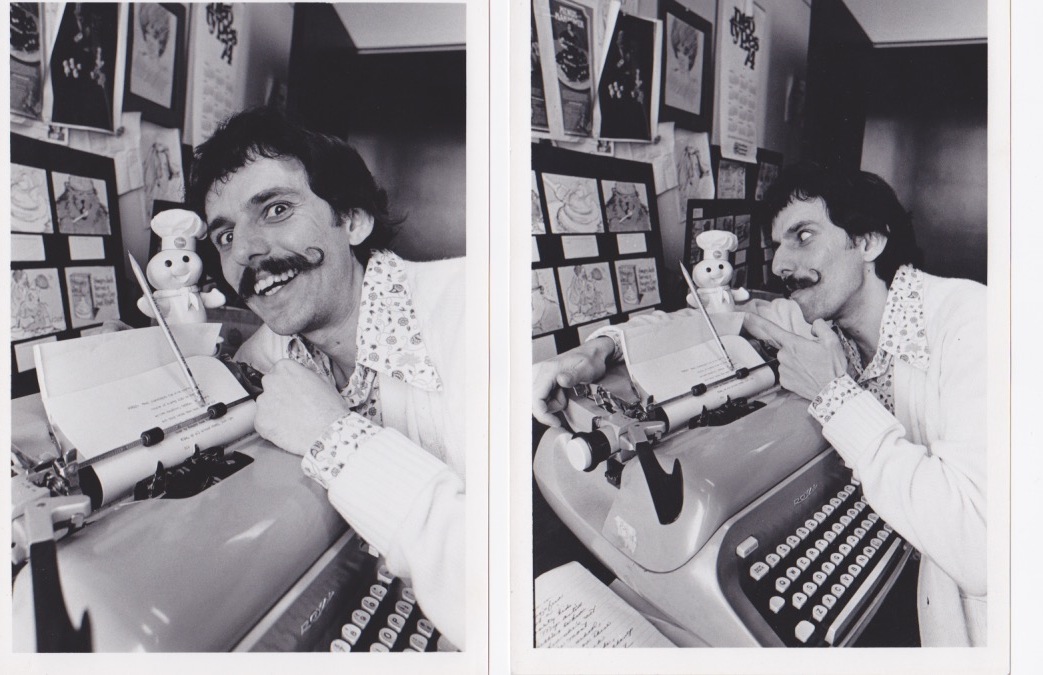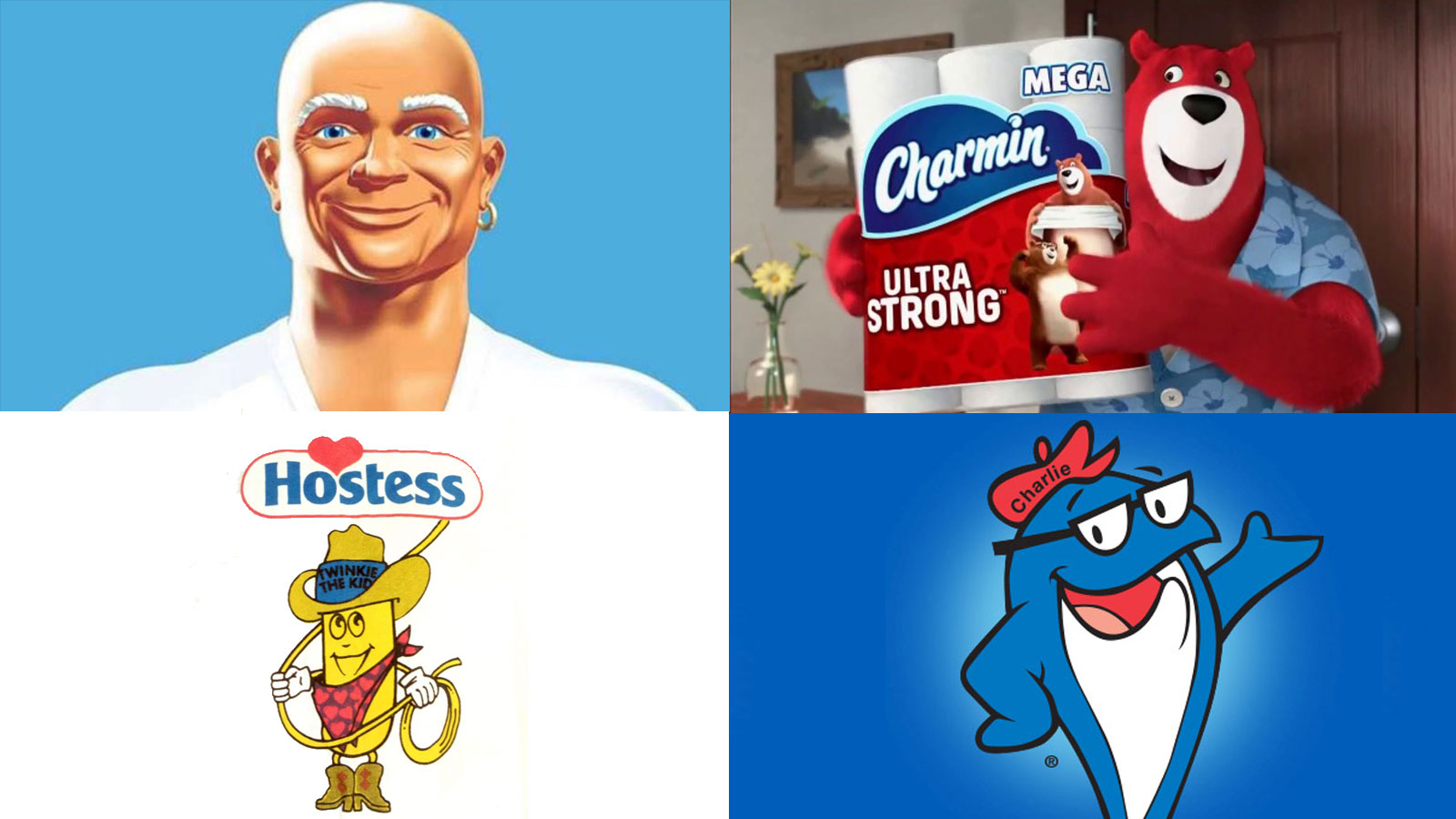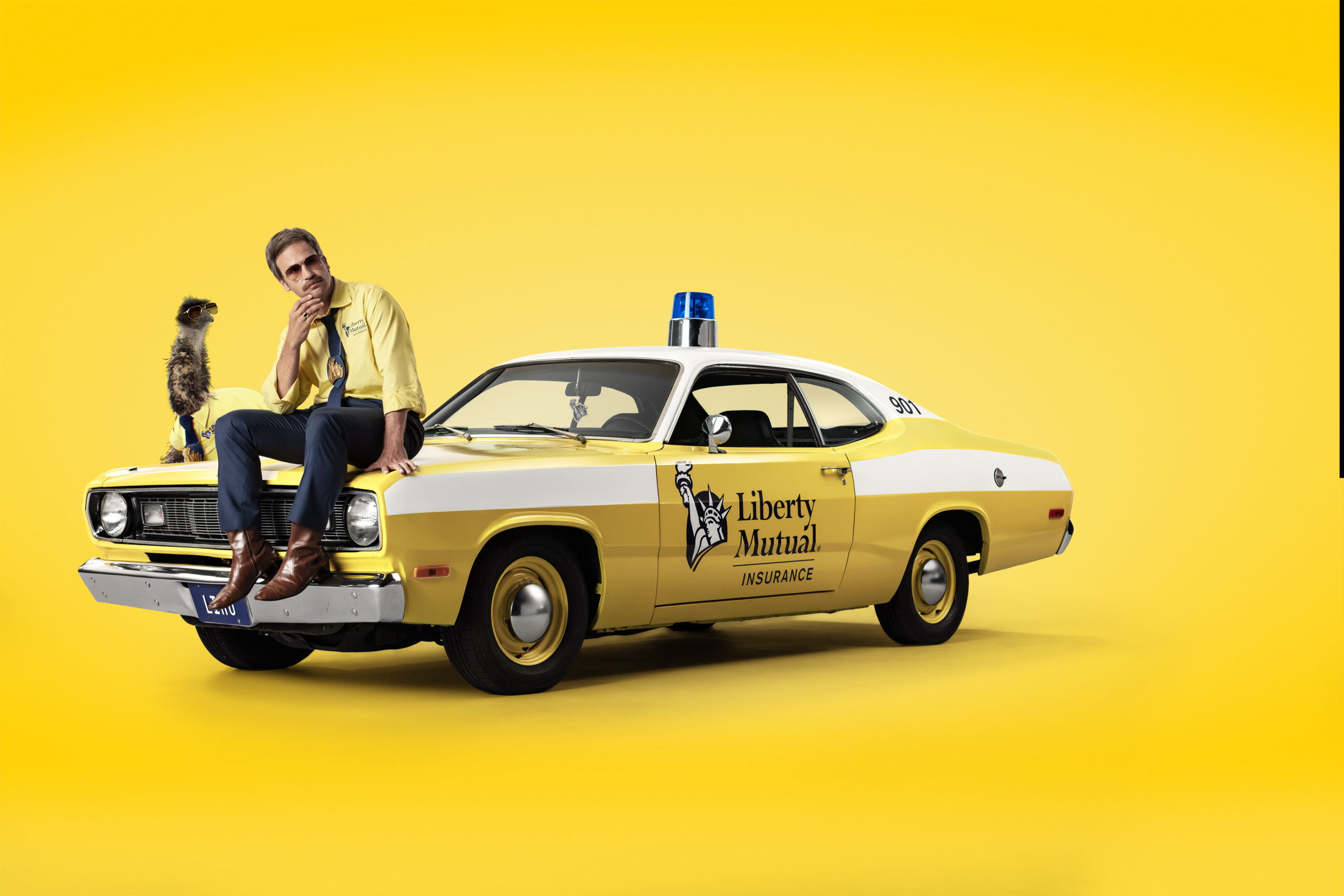Jim “Rocki” Nawrocki has always been amazed at how many people love the Pillsbury Doughboy.
Nawrocki started his career in 1970 as a junior art director at Leo Burnett, the Chicago advertising agency famous for bringing beloved brand mascots like the Pillsbury Doughboy, Tony the Tiger, and StarKist’s Charlie the Tuna to life. Nawrocki, who was hired by the Doughboy’s creator Rudy Perz, worked on campaigns for the Pillsbury Doughboy and learned how to do mascot advertising from the masters.
Back then, working with characters wasn’t such a coveted gig. Nawrocki said at the time many creatives looked down on mascots. There was even a running joke that Leo Burnett himself had a closet full of animal characters where he would go to see which animals hadn’t been used yet for new campaigns.
After 10 years at Burnett, Nawrocki moved on to work for other agencies include Needham, Harper & Steers and DDB Chicago. He found himself working on mascots again at DDB and can easily recall these characters. A talking lettuce for Bacos bacon bits. A space alien named Fruit Nick for General Mills. These mascots might not have had the staying power found in Burnett’s roster, but Nawrocki fondly remembers each one just the same.

“Every time I tell people I worked on the Doughboy, their faces light up and they become so much more friendly to me,” said Nawrocki. “This happens even today. Even a person’s body language will change.”
What endears us, as people and consumers, to the world where the brand mascot resides? What is it about these characters that we like and enjoy so much?
The Human Touch of Characters
Most audiences can instantly picture Snoopy, created by Charles M. Schulz, the cartoon beagle that serves as the Peanuts mascot. Alongside Snoopy, there are other recognizable characters that round out the Peanuts: resilient Charlie Brown, assertive Lucy, and quietly optimistic Linus.
Snoopy has gracefully transitioned from cartoon mascot into a character that may be used for various marketing campaigns from major companies. In the 1980s, MetLife used Snoopy in their campaigns to show it is not daunting to choose insurance. And in the 1960s, Snoopy appeared on NASA safety campaign materials to make going to the moon appear more relatable. (Snoopy is still used by NASA and will be orbiting the moon as the Zero Gravity Indicator on Artemis 1, slated to launch this year.)
Melissa Menta has been closely working alongside Snoopy and the Peanuts gang as the senior vice president, marketing and communications, for Peanuts Worldwide. Menta, who has held the role for over 20 years, said while people of all ages enjoy the Peanuts in and out of advertising, there is just one prerequisite to liking the characters. You need to be human.
“The characters resonate with people on many different levels,” said Menta, adding that the Peanuts characters lend themselves to so many themes that they work well in a wide variety of brand partnerships. As the brand continues to find these genuine partnerships every generation can believe the Peanuts are their own.
John Bowman, adman emeritus at Admeritus, has spent decades working on a wide range of advertising campaigns for characters like Lucky Charms’ Lucky the Leprechaun, the Pillsbury Doughboy, Trix Rabbit, and Cheerios’ Buzz Bee. Bowman said people are social and brands are inanimate. Mascots seize this gap to humanize brands and bring them to life using a character with whom people engage with beyond products, benefits, and features.
“That’s where social relationships begin,” said Bowman. “When the mascot has charisma, distinctiveness, and adorability, those relationships can last a lifetime — or lifetimes, as the relationship is passed on to new generations.”
Brand Mascots Don’t Have an Agenda
Ken Stewart, an independent documentarian who creates sizzle reels and promo reels for film and TV producers, is the creator of the Coca-Cola Polar Bears.
In 1992, Stewart was the senior vice president, creative and advertising at Columbia Pictures. He was approached by Peter Sealey, the head of marketing at Columbia Pictures, to create a new look for Coca-Cola.
What could be done in a post ‘Mean’ Joe Greene era for the brand? The iconic bears, which turned 25 years old in 2018, were inspired by Stewart’s yellow Labrador, Morgan. The love and happiness Stewart felt when he saw Morgan, whom he referred to as his “polar bear puppy,” quickly translated into an idea for Coca-Cola. What about a new campaign starring polar bears and the wordless environment they exist in that can transport audiences to another world?
These beautiful, positive feelings and messages are made possible through characters because Stewart said they have no agenda.
“[Mascots] are not political, or easily put into categories that might be offensive,” said Stewart. “So, we don’t assign them negative capabilities. They’re pure, they’re innocent, and that allows us to open up to them. We can emphasize with them and build special relationships with them.”
When there is no negativity, people will laugh and cry with mascots. In turn, brands can associate themselves with characters that mirror their marketing identity. The greater the frequency, the greater the association.
Relevance and Breaking Through the Cultural Zeitgeist
Brent Weldon, creative director at Barbarian, worked on the brand mascot for the Biden Harris 2020 political campaign: Votey McVoterson. Weldon said that brand mascots are here to stay – most have existed for decades for a reason — but their success doesn’t happen overnight.
“Brands could spend years and herculean budgets in the hopes of creating a connection with audiences without success,” said Weldon. “There is a massive amount of effort and rigor needed to propel them into the cultural zeitgeist.”
![]()
This is where Weldon believes there’s a huge opportunity for brands to integrate relevant mascots into today’s world, especially in the context of social media. A few examples of rising character stars include Microsoft’s revival of Clippy as determined by a Twitter vote into an emoji, the Celestial Seasoning Sleepytime Bear who officially woke up in the 2021 “What the Bear Missed” campaign from Deutsch NY, and Duolingo’s bright green owl, Duo.
@duolingo being CEO was fun while it lasted #helpme #Duolingo #DuaLipa #comedy #trend #DualPeep #ceo
Duo, the bright green Duolingo owl, may have one of the strongest social media personas out of any character today. With a TikTok following that expanded from 50,000 followers in September 2021 to 3.4 million today, Duo has been a source of entertainment and humor for Duolingo’s learners and wider social media audience. Much of this is because one of Duo’s strengths is the owl’s strong persona. Michaela Kron, Duolingo’s U.S. marketing manager, said Duo has a strong persona as a mascot that allows the owl to be widely known via social media platforms like Twitter and TikTok. And Duo has a strong persona as a character and is extremely personable.
“Duo is fiercely loyal and supportive of our learners’ goals and progress,” said Kron. “Duo often talks directly to our learners, making that relationship more interesting. Giving a mascot a unique personality creates a way for audiences to connect with the brand in a compelling way. He’s a huge green owl who just wants you to be your best, multilingual self.”
*We* Are Characters, Too

One of the reasons why characters resonate so much with audiences, beyond humanizing brands, is that they trigger our innate love for stories. A character bible for brand mascots outlines some of their backstory, personality, and mannerisms. The Green Giant hails from the Valley. The Pillsbury Doughboy giggles when poked in the tummy. Mr. Peanut wears spats and a monocle. And the Kool-Aid Man loves to roar out “OH YEAH!” upon entry… pretty much anywhere he goes!
“There are many more accidental mascots than purposeful ones,” said Mark DiMassimo, founder and creative chief of DiGo. “People love characters because people are characters. They can identify with them.”
Jayme Maultasch is the managing director at Deutsch NY. In 2021, the agency woke up the Celestial Seasonings’ Sleepytime Bear for a new campaign that modernized the brand and tapped into consumers’ deep memories. The familiar, iconic look of the Bear was paired with a fresh, new voice. Waking up more than 50 years later, the Bear doesn’t quite know what to make of the present landscape. The Bear sings aloud some of his ongoing frustrations, including struggling to understand why everyone has a computer in their pocket and whether “GIF” is pronounced with a “g” or “j” sound.
![]()
Maultasch said people love to hear the bear react to the absurdity of the modern world. If we are, indeed, characters ourselves we would likely have a similar reaction.
Who Is Your Brand Mascot?
Whether it stars a brand mascot or not, few commercials or campaigns are actively discussed outside of advertising circles. Generally, most commercials come and go. Few have real lasting, sticky, staying power.
Some spots create that hook with the help of a brand mascot or brand spokesperson. Just look at Progressive’s Flo.
“People like to talk about people, and characters work just like people. ‘I like that Flo from the insurance company campaign… which one is it?’ evolves to ‘I like that Flo from Progressive,’” said DiMassimo. “Word of mouth is free advertising on top of your advertising. That’s priceless.”

Brand mascots have proven that businesses considered to be a bit more serious like those in insurance, airlines, and financial management, can see eye to eye with consumers. A character that is able to humanize a brand, has no agenda, maintains relevance, and tells a story audiences can relate to has the potential to endear consumers to the brand for life.
If a brand must question whether they should have a mascot, they may already know the answer.
“Most brands, if they think about a mascot at all, may wonder: ‘Why would we have a mascot?’ said Bowman. “Perhaps a better wondering is: ‘Who would our mascot be?’”

Love it! Especially the whole Brand Mascot thing and article on Leo Burnett. Because I have a division in Jersey, Imagination Workshop Studio that offers services on local and national television commercial campaigns and spots.